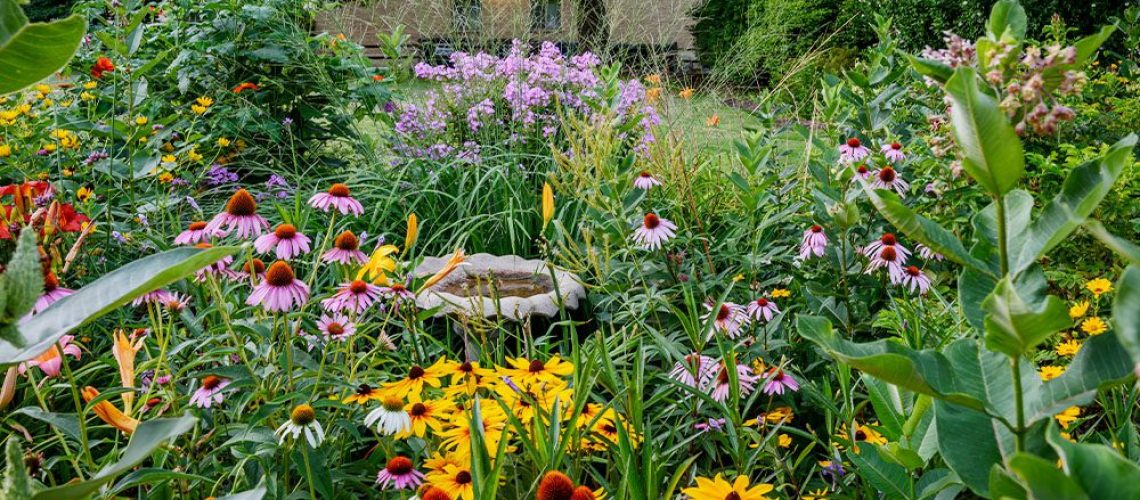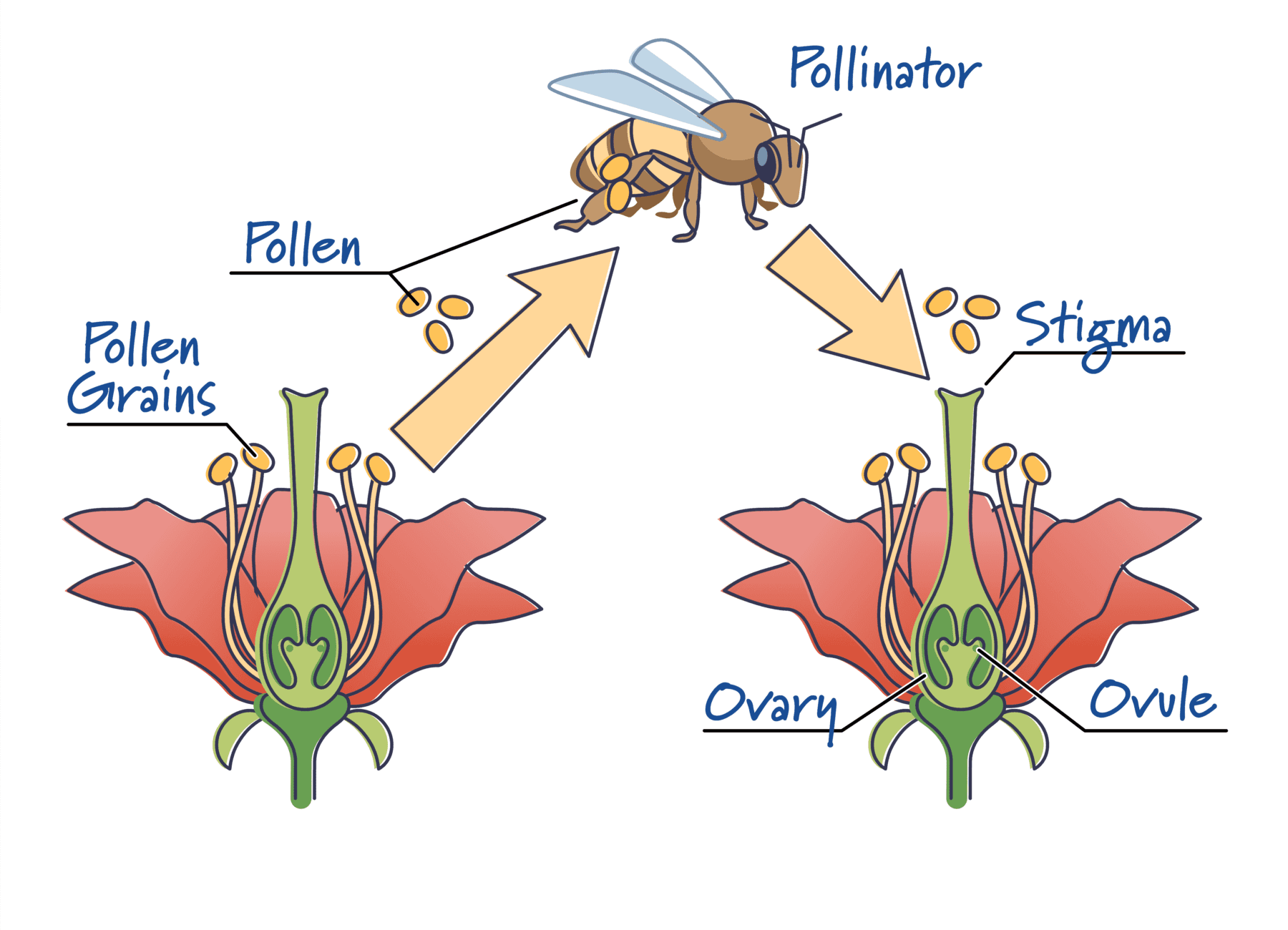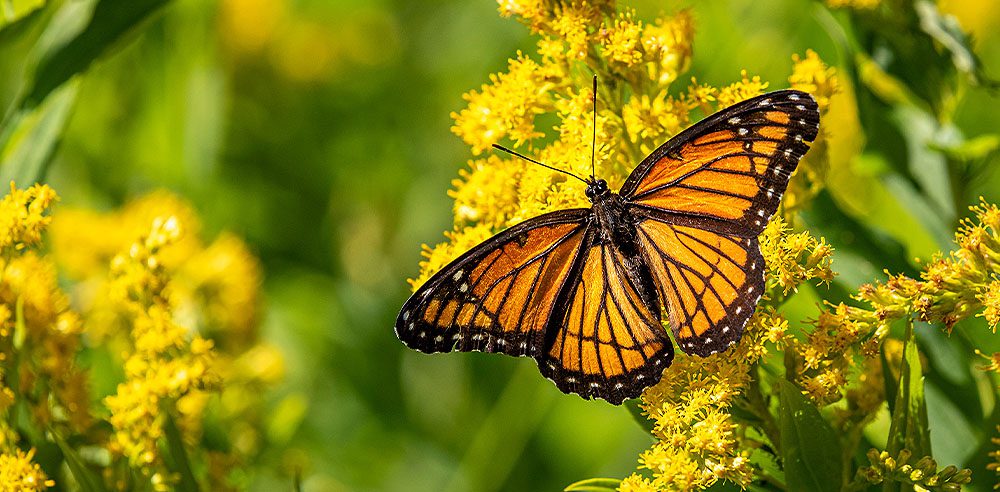- SHOP ONLINE
- AT THE GARDEN CENTRE
- BE INSPIRED
- LANDSCAPE SOLUTIONS
- EMPLOYMENT
- ABOUT US
Menu
- SHOP ONLINE
- AT THE GARDEN CENTRE
- BE INSPIRED
- LANDSCAPE SOLUTIONS
- EMPLOYMENT
- ABOUT US

As summer arrives, our gardens prepare for a busy season of growth, pollination, and harvest. A key player in this equation is, of course, the pollinators! With their populations declining, gardeners need to take action and assist these populations for the benefit of the earth and for a thriving garden. We’ll cover why pollinator gardens are important, the key components to building one, and how we can help you create the perfect landscape to support your local ecosystem.

In its simplest form, a pollinator garden is a garden that contains hardscapes, plants, and water features that attract pollinators. It creates an environment that is natural and native to the region, making pollinators more comfortable to go about their business. If they can find water sources, shelter, and plants that they recognize, you’ll have some happy critters in your yard. Plus, having beneficial insects and birds around will help reduce the chances of harmful pests invading your garden.
Pollinator gardens are inexpensive and easy to transition to incrementally if you don’t want to overhaul your whole space. Plus, once established, these gardens require very little upkeep.
With the rapid urbanization in recent history, pollinator populations are steadily declining because their natural habitat is disappearing. Pollinators are essential for food production, healthy ecosystems, and the earth’s wellness, so gardeners must keep pollinators’ health in mind!
Though it might seem as though a few minor changes in your yard won’t make a big difference, we can assure you that every little bit counts! Small changes to your garden can support dozens of insects and birds a day, which adds to a massive impact by the end of the year. Not only will this benefit the environment as a whole, but the ecosystem within your yard will thrive with a balanced and well-rounded garden that supports every aspect. Of course, encouraging your neighbours to follow suit certainly won’t hurt.
There are a few key components that you’ll need to make sure that your yard is a cozy place for pollinators to stay:
![]() Water Source: Whether you have a water feature or incorporate water plants into your landscape, consistently having a source available means that your pollinators won’t have to leave the yard to find some.
Water Source: Whether you have a water feature or incorporate water plants into your landscape, consistently having a source available means that your pollinators won’t have to leave the yard to find some.
![]()
Shelter from Wind: Wind can be unsettling for many pollinators, so providing a space with shelter from the elements will trigger their instincts to hunker down when the weather is unsettled.
![]() Large Areas of Native Plants: Planting large areas of various native varieties will give the pollinators lots of room to get busy and pollinate! Diversity is key so that you can attract all sorts of pollinators; consider planting native trees, shrubs, wildflowers, grasses, and perennials.
Large Areas of Native Plants: Planting large areas of various native varieties will give the pollinators lots of room to get busy and pollinate! Diversity is key so that you can attract all sorts of pollinators; consider planting native trees, shrubs, wildflowers, grasses, and perennials.
![]() Homes for Birds and Bees: Building bee hotels and birdhouses are fantastic ways to get some permanent residents in your yard.
Homes for Birds and Bees: Building bee hotels and birdhouses are fantastic ways to get some permanent residents in your yard.
Once your garden is established, it should take very little maintenance. Native plants are adaptable throughout the year, so they should only require the occasional weeding.

Here are some native flowers to support a natural habitat in your yard:
Aster
Black-Eyed Susan
Common Milkweed
Purple Coneflower
Goldenrod
Wild Geranium
Columbine

It is essential not to use pesticides in a pollinator garden—it will harm the good insects and the pests! We highly recommend using manure, organic compost, and natural pest solutions so that you don’t introduce any synthetic or harmful chemicals to your garden’s ecosystem.
Another eco-friendly boost for a pollinator garden is to leave out the garden lights. According to recent garden reports, garden lights confuse insects, making them tired and easy prey for predators. Turning off the lights can save six bugs a night, making a massive difference over a year.

If you’re not sure how to create a pollinator garden or looking for a new landscape design that will create a haven for pollinators, our Royal City Landscape Solutions team would be more than happy to consult with you. Whether you want to make a pollinator garden in the corner of your landscape or overhaul the entire space, we’d be happy to help. Our expert horticulturists can recommend the best native varieties to compliment your yard and create a healthy habitat for pollinators.
If you’re looking to get a head start on pollination, you can preorder pollinators through us to give your garden a boost. Of course, creating a pollinator-friendly habitat will encourage them to stay longer. If you’re looking for help adding pollinators to your landscape in 2022, reach out to us at Royal City Nursery for products and pollinators or to Royal City Landscaping Solutions if you’d like to make your landscape a pollinator paradise!

HOURS
JOIN US YEAR-ROUND!
Hours of Inspiration
Monday to Friday: 9am – 6pm
Saturday: 9am – 5pm
Sunday: 10am – 5pm
BE INSPIRED
Sign up for our E-Newsletter to receive garden tips, landscaping advice and more, delivered right to your inbox.
Sign up today!
Find Us